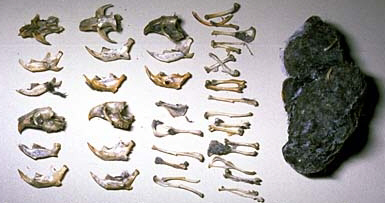Food Inc. Reflection
1) The Food Inc. video was not much of an impact to me since I never abide by the rules of thinking about the poor chickens or cows etc. As far as I know about my religion, devout person of Christianity doesn’t really care about consuming meat (only vegetarian). It is great that technology is developed to alter the lives of us however treating the animals harshly should be disallowed (ex stuffing animal “chicks” all in one whole”). When technology is a part of our lives, there are ways to harvest crops, support animals which tell that the technology would make the farming system better.
2) Food Inc. gives clear information about the negative impact upon the animals and farmers however it gives a positive upon us, the consumers today. The technology is an efficient tool but nothing good for our Earth.
The technology seems to pollute the earth and make troubles; therefore we should try to reduce gases by utilizing no technology materials. As our class watched the part where the woman’s son died due to salmonella disease, it is not always safe to consume any nutrition.
3) Everyday fresh choices of nutrition arrive in markets for consumers to purchase; foods look nice and the market seems much organized but it would be arduous for us to live without all these materials when no more food crops can be available. The stores today have varieties of products which grabs the consumer’s attention. Many products come from various farm animals and more but there won’t be use when too much products compete for more profit. Consumers today choose the best product for safety purposes, if they don’t want to buy a certain product then the industries providing the foods will bankrupt. We like to buy organic materials for our “safety.” We don’t want to produce the “bads” for our own good, someday too much products in the stores will be the causes of our survival.
4) This links to the other video “Human Footprint.” Humans (us) tend to use up too many resources than what we anticipate. The food Inc explained the usages of all these materials in our lives and what will be the effects beyond. Humans are the creatures who eat up the earth, in other words dominate the world. When we use up the left resources of Earth, the earth will be on the verge of extinction. The earth won’t be necessarily extinct but anyway we can support the Earth but living like well and sustain humans do.
5) All of the humans now a day’s look forward to the How part since why is not too much economical. What I want to say is that industries and business companies usually want advantages from their jobs. What we need to do is to find more and better solutions for our lives. Probably all the reasons started because of technology devices in our routines and this is why all of us need to think back.
6) Natural farming is the freedom farming and an affectionate farming to animals by giving them rooms to bunch up and live, give light resources. On the other hand, Industrial farming is the farming style of threatening the animals. Animals with no light has to live in a stack not knowing where they move and industries give animals twice or more foods to increase their size. It is not secure to rely on the Industrial farming style which KFC does (but it is still delicious). A good farming style would be consuming an average chicken. However both should be needed for the wise world since the problem is the “livestock” of the nation. The video mentioned that both styles of farming would be necessary, if not we wouldn’t be able to obtain meat.
7) In Korean lives, it isn’t much of deal because we don’t prefer the technology usages too much. According to Korean farming, we would be growing fatter than now but no impacts would be made until decades. In the present, food companies like to add what they call “Stuffs not healthy and secure for our lives” since it attracts attention and most of all it will taste good (Again KFC). The specific reason beyond is because of stuffed chemicals inside the animals. Faster we cause us to be unhealthier; more mass production will be affecting the lives of ours.
8) I didn’t really mind about the costs in the video since once again I don’t really mind but I took quick mind notes about the health cost of mass production and cultural costs. Health cost is one of the menaces of our routines because as much as we live like this, more viruses will occur. Technology destroyed the cultural cost of healthy lives. Some environmental costs are companies who try to alter the ways of organic farming which leads to ethical cost. Companies love earning profits by utilizing the technology and this would be the reason no one can stop it. When farmers need money they have to follow the industries worse farming skills.
Notes: The video seem to be engaging in the first parts where they linked it to our daily routines however as soon as the video kept moving on it was more like business deals of peasants.








